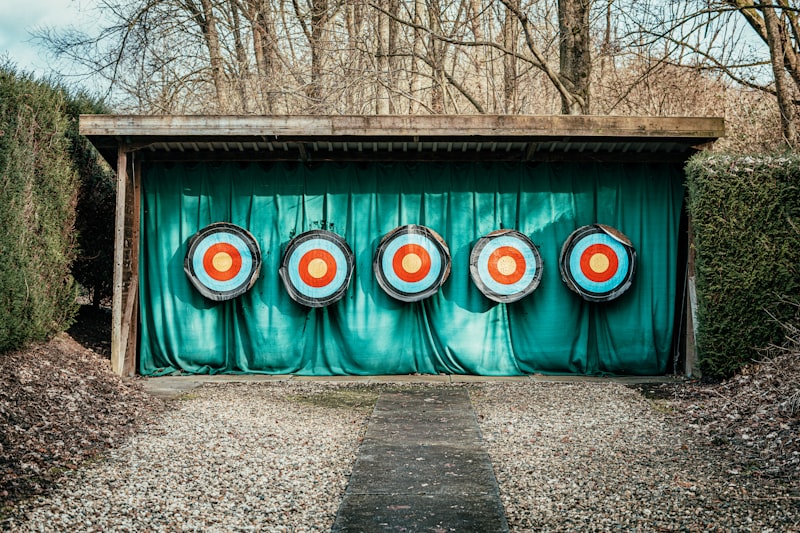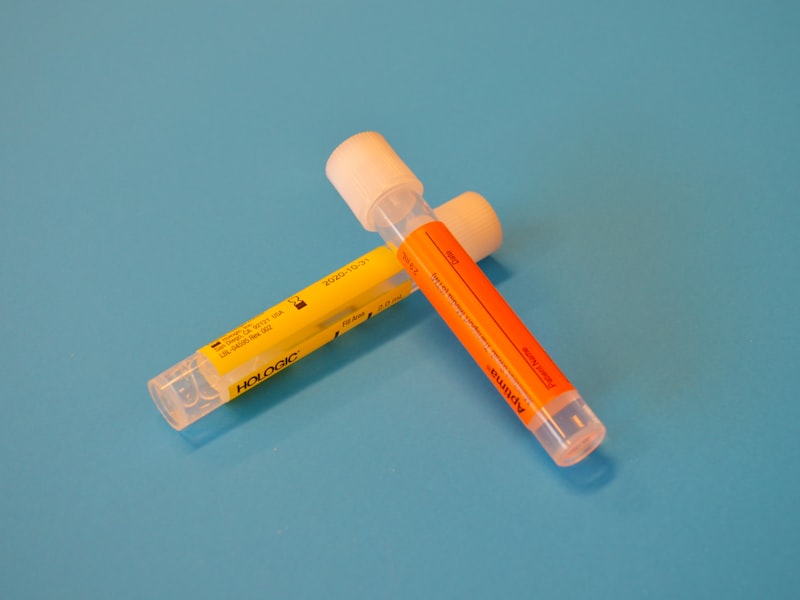For years, I struggled with the same challenge you're probably facing right now: figuring out how to allocate my marketing budget across channels to maximize impact and ROI. I would pour resources into a campaign, cross my fingers, and hope for the best. Sometimes it worked out, but more often than not, I was left scratching my head, wondering where I went wrong.
But then I discovered the true potential of rapid experimentation and optimization. It was like a lightbulb went off in my head. Instead of relying on guesswork and gut instinct, I could use data and structured testing to quickly validate my hypotheses and iterate my way to success. And you know what? It worked. By embracing an experimentation mindset, I was able to unlock significant gains in performance and efficiency, and I never looked back.
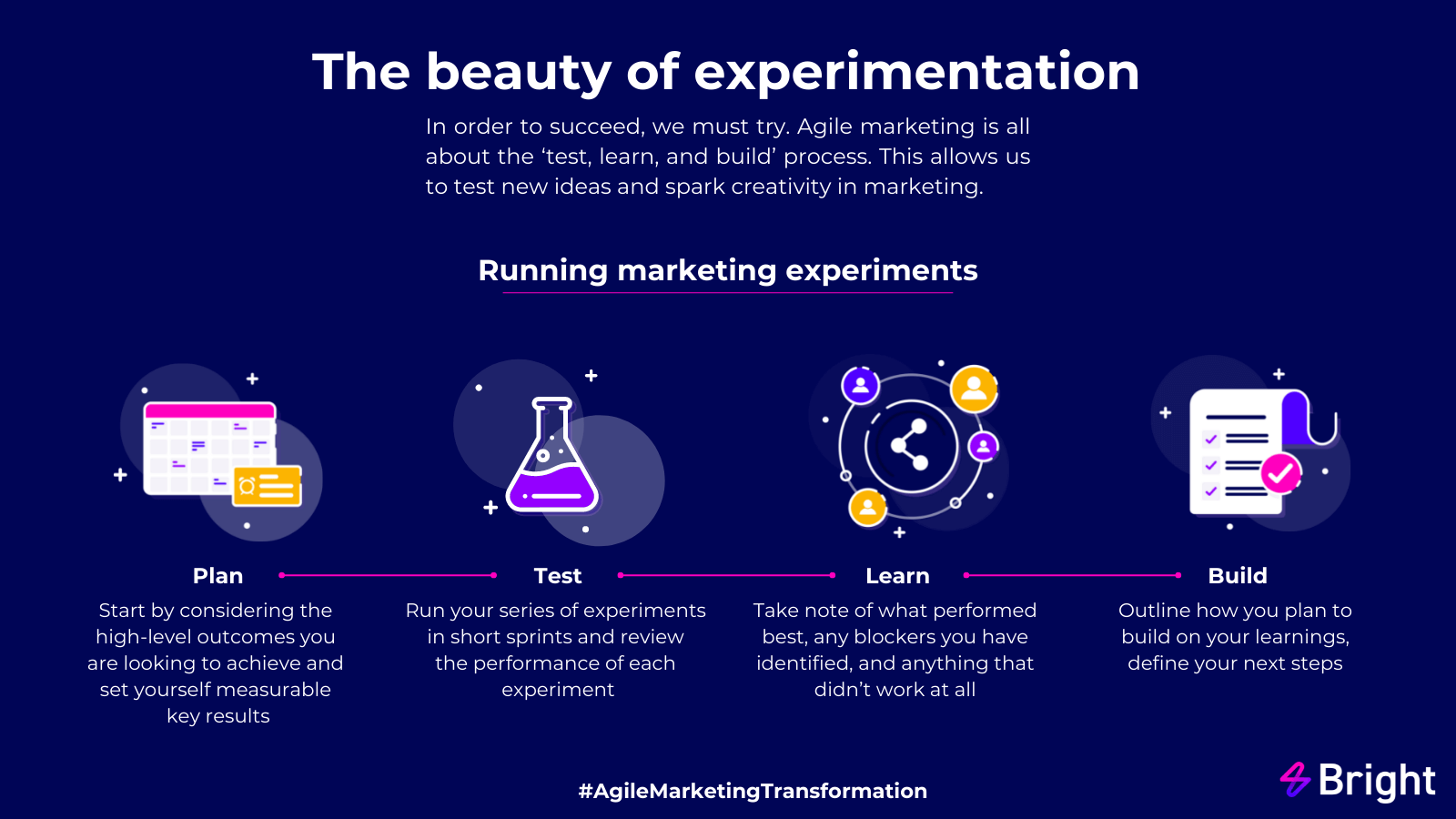
The Experimentation Imperative
In a world of constrained budgets and ever-changing consumer behaviors, the ability to rapidly test and iterate is no longer a nice-to-have—it's a competitive necessity. The most successful marketers today are those who have embraced experimentation as a core competency, using data and analytics to continuously refine their approach.
Consider the case of West Coast Vape Supply, an e-commerce brand in the vaping space. By implementing a structured experimentation program across their paid search and social channels, they were able to:
- Increase ROAS by 38% in just 90 days
- Identify and scale winning ad creative and targeting combinations
- Reallocate 25% of their budget from underperforming tactics
The key to their success? A well-defined experimentation framework that allowed them to generate and test hypotheses at scale.
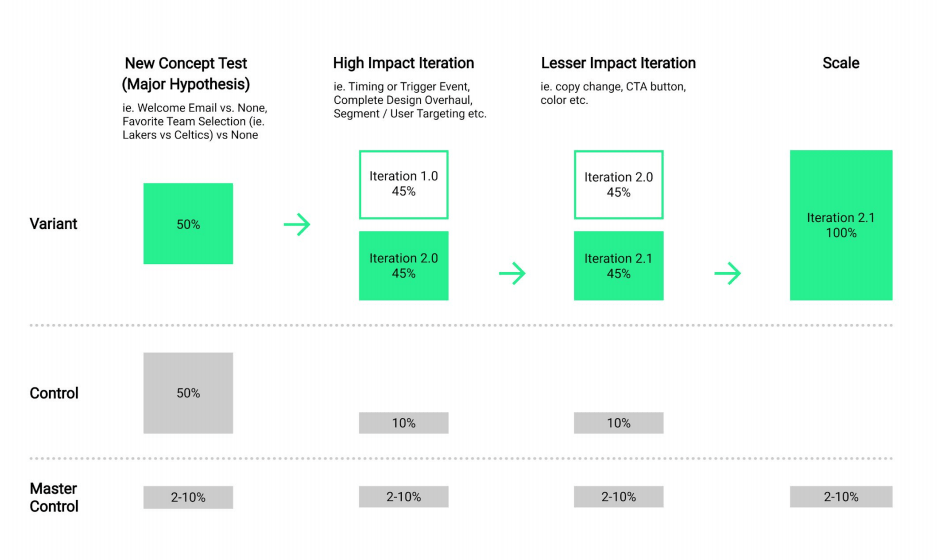
The Anatomy of an Effective Experiment
| Question | Description | Example |
|---|---|---|
| What happened? | Objectively summarize the results of the experiment | Variant A achieved a 5% lift in conversions compared to the control |
| Why did it happen? | Analyze the drivers behind the observed results | The winning variant had a clearer value proposition and more prominent CTA |
| So what? | Interpret the implications and learnings from the experiment | We should prioritize clarity and urgency in our messaging across all campaigns |
| Now what? | Identify specific actions and next steps based on the experiment | Roll out the winning variant to all traffic and test additional variations on the theme |
At its core, a marketing experiment is simply a structured way to answer a question about the performance of a particular tactic or approach. To design effective experiments, you need four key ingredients:
A clear goal
What are you trying to achieve? More clicks, conversions, revenue? Be specific and make sure your goal is measurable.
A testable hypothesis
What do you believe will drive the desired outcome? This could be a new ad creative, targeting strategy, or offer. The key is to isolate a single variable to test.
A control group
To measure the impact of your experiment, you need a baseline to compare against. This is typically a segment of your audience that does not receive the experimental treatment.
Defined metrics
What data will you use to evaluate the success of your experiment? Make sure you have a clear measurement plan in place before launching.
With these components in place, you can start to design and execute experiments across channels. But how do you prioritize which experiments to run first? And how do you ensure your learnings are actionable and insights are shared across the organization?
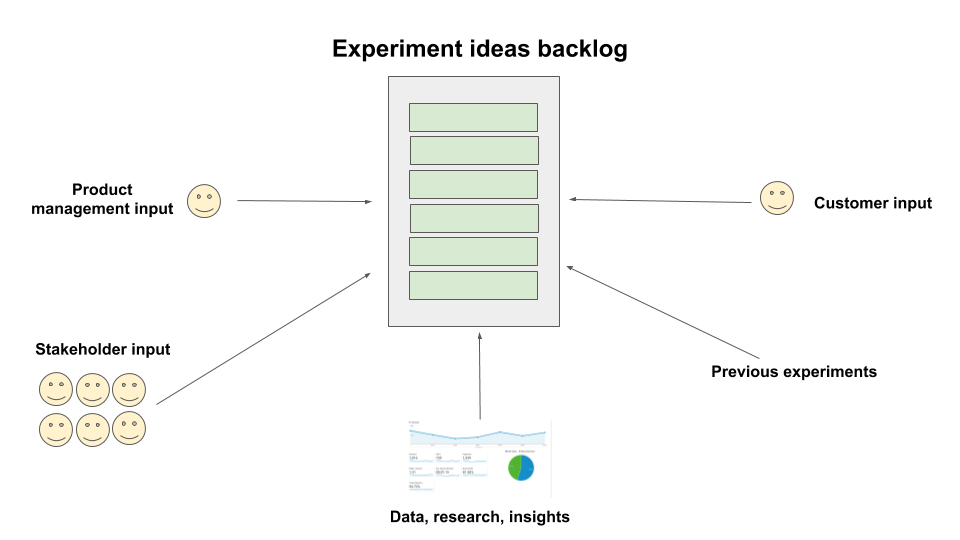
Building an Experimentation Engine
Successful experimentation requires more than just a one-off test. To truly unlock the benefits, you need to build a scalable experimentation engine that becomes a core part of your marketing operating model.
| Dimension | Description | Assessment Questions |
|---|---|---|
| Leadership | Executive sponsorship and advocacy for experimentation | Do leaders recognize the value of experimentation? Is there a dedicated experimentation budget and team? |
| Process | Standardized approach to experiment design and analysis | Is there a documented experimentation process? Are stakeholders aligned on key metrics and success criteria? |
| Skills | Organizational capabilities and expertise in experimentation | Do team members have the necessary technical and analytical skills? Is there ongoing training and education around experimentation? |
| Mindset | Cultural attitudes and beliefs about risk-taking and learning | Is failure viewed as an opportunity to learn and improve? Are successful experiments celebrated and shared broadly? |
Here's a step-by-step guide to getting started:
Secure executive sponsorship: Experimentation requires a willingness to take risks and challenge the status quo. Make sure you have leadership buy-in and alignment on the importance of testing.
Assemble a cross-functional team: Experimentation should not be siloed within the marketing org. Bring together stakeholders from analytics, product, engineering, and creative to ensure a diversity of perspectives.
Establish goals and guardrails: Define clear objectives for your experimentation program and put guidelines in place around budget, timelines, and risk tolerance. This will help you move quickly while still being disciplined.
Implement the right tools and processes: Invest in experimentation and analytics platforms that allow you to easily design, execute and measure tests. Develop standardized processes for ideation, prioritization, and reporting.
| Platform | Key Features | Pricing Model |
|---|---|---|
| Optimizely | Visual editor Multi-page experimentation Behavioral targeting |
Annual subscription Custom pricing |
| Google Optimize | Native integration with Google Analytics Bayesian statistics Free version available |
Free Optimize 360 for enterprises |
| VWO | Heatmaps and session recordings Conversion optimization Usability testing |
Monthly subscription Starts at $99/month |
Create a culture of learning: Encourage your team to embrace failures as learning opportunities. Celebrate successes and socialize insights broadly. The more you can ingrain experimentation into your culture, the more transformative the impact will be.
One of our clients, a global financial services firm, implemented a version of this framework and saw immediate results, running over 100 experiments in the first 6 months and uncovering insights that reshaped their entire digital strategy. The key was starting small, generating quick wins, and then scaling the program over time.

Designing High-Impact Experiments
Of course, building the engine is only half the battle. To truly crack the channel code, you need to design experiments that are likely to yield meaningful insights and drive bottom-line impact.
Some best practices to keep in mind:
Focus on high-leverage variables
Test the factors most likely to move the needle, whether it's your offer, audience targeting, or ad placement. Avoid testing minor variations that are unlikely to drive results.
| Impact | Low Effort | High Effort |
|---|---|---|
| High | Quick Wins | Big Bets |
| Low | Fill-Ins | Money Pits |
Embrace multi-variate testing
Don't just test one variable at a time. Use statistical methods like multi-variate testing to efficiently test multiple factors in combination, allowing you to uncover interaction effects.
Leverage AI and automation
Use machine learning algorithms to rapidly identify promising test opportunities and dynamically allocate traffic to winning variants. This “always-on” approach to optimization can drive significant gains.
Test across the funnel: Experimentation isn't just for top-of-funnel channels. Look for opportunities to test and optimize at every stage, from initial awareness through to purchase and loyalty.
Some channel-specific tactics to experiment with:
| Channel | Tactic |
|---|---|
| Paid Search | - Ad copy and creative - Keyword match types - Bidding strategies |
| Social Media | - Audience targeting - Ad formats - Placement and timing |
| - Subject lines - Personalization - Cadence and frequency |
|
| Content Marketing | - Headlines and hooks - Content format - CTAs and conversion paths |
The key is to prioritize experiments based on potential impact, while also maintaining a mix of short and long-term bets. And don't forget to A/B test a “champion” from a previous test to keep your frame of reference and avoid degradation over time.
Bringing It All Together
We've covered a lot of ground in this guide, from the strategic importance of experimentation to tactical best practices for experiment design and execution. But perhaps the most important takeaway is this:
Experimentation is not a one-time initiative or a side project. It's a new way of operating that can transform your marketing organization and unlock step-change improvements in ROI.
Embracing this mindset requires courage, conviction, and a willingness to challenge long-held assumptions. But for marketers who get it right, the rewards are substantial.
So what are you waiting for? It's time to start experimenting your way to a winning channel mix. And if you need a partner to guide you on that journey, DataDab is here to help. Let's crack the channel code together.
FAQ
1. What is rapid experimentation and why is it important for marketers?
Rapid experimentation is the process of quickly testing and iterating marketing strategies to identify what works best. It's crucial for marketers because it allows them to validate assumptions, optimize performance, and allocate resources more effectively.
2. How does experimentation differ from traditional marketing approaches?
Traditional marketing often relies on gut instinct, past experience, and best practices. Experimentation, on the other hand, uses data and structured testing to inform decisions and drive continuous improvement.
3. What are the key components of an effective marketing experiment?
An effective marketing experiment includes a clear goal, a testable hypothesis, a control group, and well-defined success metrics. These components ensure that the experiment is properly designed and can yield actionable insights.
4. How do I get started with experimentation if I have limited resources and expertise?
Start small and focus on high-impact areas where you can run simple tests and generate quick wins. As you build momentum and prove value, you can gradually expand your experimentation program and invest in more sophisticated tools and capabilities.
5. What metrics should I use to evaluate the success of my experiments?
The specific metrics will depend on your goals and the channels you're testing, but common ones include click-through rate, conversion rate, cost per acquisition, and return on ad spend. The key is to choose metrics that are directly tied to your business objectives.
6. How long should I run an experiment before drawing conclusions?
The duration of an experiment depends on factors like sample size, statistical significance, and business cycles. As a general rule, aim to run experiments for at least 2-4 weeks to account for variations in behavior and ensure you have enough data to make informed decisions.
7. What should I do if an experiment fails to produce the desired results?
Treat failures as learning opportunities and use them to refine your hypotheses and test new variations. The key is to fail fast, learn from the results, and iterate quickly to find what works.
8. How can I scale my experimentation program across multiple channels and teams?
Establish standardized processes and guidelines for experiment design, execution, and reporting. Invest in experimentation platforms that support collaboration and integration across channels. Foster a culture of experimentation by celebrating successes and sharing learnings broadly.
9. What role does technology play in enabling experimentation at scale?
Technology is crucial for automating and optimizing the experimentation process. Tools like A/B testing platforms, data management solutions, and machine learning algorithms can help you identify test opportunities, allocate traffic dynamically, and analyze results more efficiently.
10. How do I build a culture of experimentation within my organization?
Building an experimentation culture starts with securing executive buy-in and aligning on the strategic importance of testing. From there, it's about empowering teams to take calculated risks, providing the necessary resources and expertise, and celebrating wins and learnings along the way. Ultimately, experimentation should become a core competency and a source of competitive advantage for the organization.



